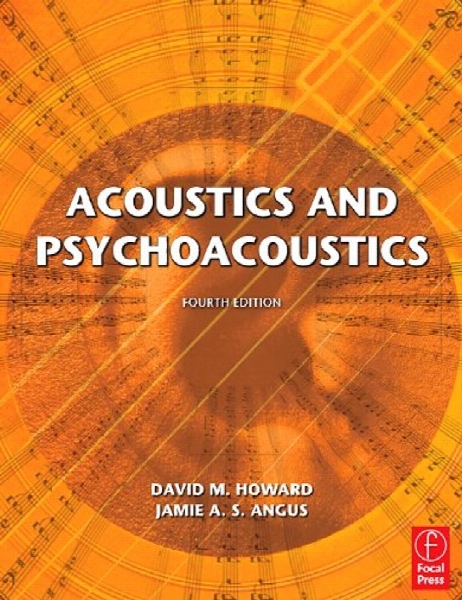Acoustics and psychoacoustics
- نوع فایل : کتاب
- زبان : انگلیسی
- مؤلف : David M Howard; Jamie Angus
- ناشر : Amsterdam ; London : Focal
- چاپ و سال / کشور: 2009
- شابک / ISBN : 9780240521756
Description
1.1 P ressure Waves and Sound Transmission 2 1.1.1 T he nature of sound waves 3 1.1.2 T he velocity of sound waves 3 1.1.3 T he velocity of sound in air 5 1.1.4 T ransverse and other types of wave 9 1.1.5 T he velocity of transverse waves 9 1.1.6 Waves in bars and panels 10 1.1.7 T he wavelength and frequency of sound waves 14 1.1.8 T he wavenumber of sound waves 17 1.1.9 T he relationship between pressure, velocity and impedance in sound waves 18 1.2 Sound Intensity, Power and Pressure Level 21 1.2.1 Sound intensity level 21 1.2.2 Sound power level 23 1.2.3 Sound pressure level 23 1.3 A dding Sounds Together 26 1.3.1 T he level when correlated sounds add 28 1.3.2 T he level when uncorrelated sounds add 30 1.3.3 A dding decibels together 34 1.4 T he Inverse Square Law 36 1.4.1 T he effect of boundaries 39 1.5 Sound Interactions 40 1.5.1 Superposition 41 Chapter 1: Introduction to Sound Sound is something most people take for granted. Our environment is full of noises, which we have been exposed to from before birth. What is sound, how does it propagate, and how can it be quantified? The purpose of this chapter is to introduce the reader to the basic elements of sound, the way it propagates, and related topics. This will help us to understand both the nature of sound and its behavior in a variety of acoustic contexts, and allow us to understand both the operation of musical instruments and the interaction of sound with our hearing. 1.1 Pressure waves and sound transmission At a physical level sound is simply a mechanical disturbance of the medium, which may be air, or a solid, liquid or other gas. However, such a simplistic description is not very useful as it provides no information about the way this disturbance travels, or any of its characteristics other than the requirement for a medium in order for it to propagate. What is required is a more accurate description which can be used to make predictions of the behavior of sound in a variety of contexts. 1.5.2 Sound refraction 42 1.5.3 Sound absorption 44 1.5.4 Sound reflection from hard boundaries 44 1.5.5 Sound reflection from bounded to unbounded boundaries 46 1.5.6 Sound interference 47 1.5.7 Standing waves at hard boundaries (modes) 49 1.5.8 Standing waves at other boundaries 53 1.5.9 Sound diffraction 55 1.5.10 Sound scattering 58 1.6 T ime and Frequency Domains 59 1.6.1 What is Fourier theory? 59 1.6.2 T he spectrum of periodic sound waves 60 1.6.3 T he effect of phase 62 1.6.4 T he spectrum of non-periodic sound waves 63 1.7 A nalyzing Spectra 64 1.7.1 Filters and filter types 64 1.7.2 Filter time responses 65 1.7.3 T ime responses of acoustic systems 69 1.7.4 T ime and frequency representations of sounds 69 Bibliography 72
The acoustics of a space can have a real impact on the sounds you create and capture. This book helps you understand how real music sounds behave in different spaces whether during a performance or a recording and how they are perceived by performers and listeners.


